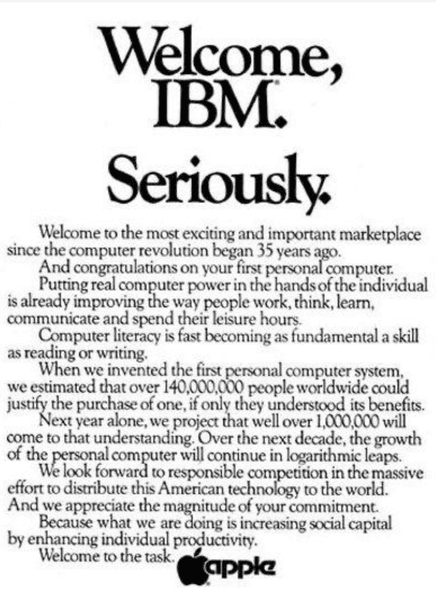Sublime
An inspiration engine for ideas
So in 1957, when we established a corporate personnel department, we were careful in defining its role and responsibilities. It was to support management, not supplant it.
David Packard • The HP Way: How Bill Hewlett and I Built Our Company (Collins Business Essentials)
Bill and I had decided we were going to reinvest our profits and not resort to long-term borrowing. I felt very strongly about this issue, and we found we were clearly able to finance 100 percent growth per year by reinvesting our profits. After some discussion with the members of the board, they seemed to be impressed with what we were doing but
... See moreDavid Packard • The HP Way: How Bill Hewlett and I Built Our Company (Collins Business Essentials)
Then-CEO Eric Schmidt shared a simple but extremely effective framework to resolve these tensions: 70-20-10. Google would devote 70 percent of its resources to the core business, 20 percent to emerging products, and 10 percent to research and development for future products.
Claire Hughes Johnson • Scaling People: Tactics for Management and Company Building

When his employer, the Bell Labs research center in New York, refused to promote Shockley to senior management, he quit to launch Shockley Semiconductor Laboratory. He hired several PhDs from MIT and moved to California in the earliest days of what became Silicon Valley. Right from the start, Shockley Semiconductor had a paranoid, authoritarian,
... See moreJoshua Yellin • The Bonfire Moment: Bring Your Team Together to Solve the Hardest Problems Startups Face
Years later, after Grove had learned to appreciate this, he read Peter Drucker’s The Practice of Management, which described the ideal chief executive as an outside person, an inside person, and a person of action. Grove realized that instead of being embodied in one person, such traits could exist in a leadership team. That was the case at Intel,
... See moreWalter Isaacson • The Innovators: How a Group of Hackers, Geniuses, and Geeks Created the Digital Revolution
We spent a lot of time getting it right, knowing that the market was not ready for it. We disguised what later became the BlackBerry as a pager. Livingston: Because people knew what a pager was, they could say, "Hey, I need one of those"? Lazaridis: That's right. We gave them the opportunity to go two-way, so that they could send a message as well
... See moreJessica Livingston • Founders at Work: Stories of Startups' Early Days
That was the genesis of what has been called MBWA. I learned that quality requires minute attention to every detail, that everyone in an organization wants to do a good job, that written instructions are seldom adequate, and that personal involvement is essential.
David Packard • The HP Way: How Bill Hewlett and I Built Our Company (Collins Business Essentials)
The Newton group was more like a startup at the time, and so for once I was able to execute some of the ideas we’d had in the design group. It wasn’t until Jobs came back that what we were trying to do got any traction outside of the Newton group. DOUG SATZGER, industrial design creative lead (now vice president of industrial design at Intel) We
... See more